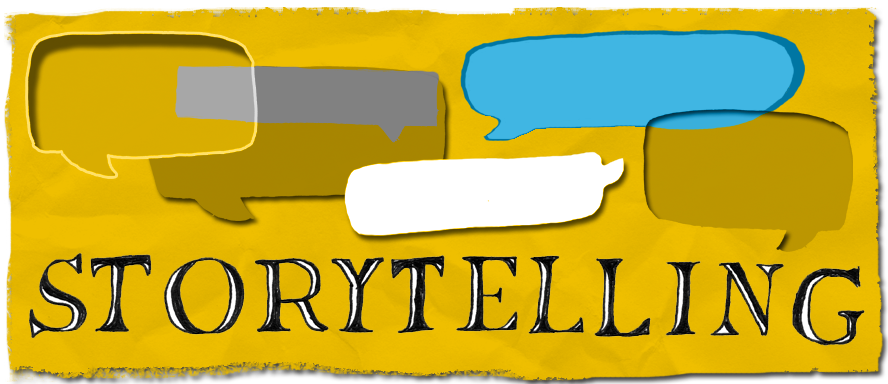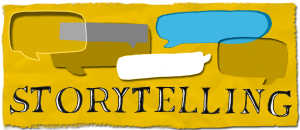9/14/2014
·Enable high contrast reading
Stories Matter and Grief Stories Can Heal

In her work Listening Generously, Rachel Naomi Remen talks about how the way we deal with losses, large and small, shapes our capacity to be present to all experiences. She talks about how these losses, especially those born of illness, open us to the rich tapestry that is humanity and the human experience and to our unexpected strengths. She also stresses, “The story is the container for meaning.”
These two beautifully expressed notions of the power of loss and the role of story are linked in a profound way that I see at work every time I interview a family that is caring for a child with a serious, life-threatening illness.
I have interviewed many parents for Courageous Parents Network about their experiences caring for their child with serious illness: several were single mothers, most were a mother and father pair; half were bereaved within the past 18 months, and half were currently caring for their ill child. Most had additional, healthy children. And in each interview, regardless of whether the child was living or deceased, parents reported that the experience parenting their child through their illness, and for some through their death, taught them about what really matters. Parents described their child as a messenger and a teacher of wisdom.
The cynics may say this is parents’ way of making it all OK but I disagree. Rather, it affirms what Naomi Remen has observed from working with patients and doctors: “The view from the edge of life is so much clearer than the view that most of us have … The repository of wisdom are the sick people in our culture,” she tells us. Parents who are caring for a child who has a serious illness have this view: as the caregivers who love that child and on whom that child is dependent, they are on that edge. Caring for their child, seeing their child’s impact on others, watching the universe organize around their child, focuses parents’ thoughts on who their child has touched, who has touched their child, and what it all might mean.
As a reader, imagining pediatric illness, you may trip over that word “mean.” How can pediatric illness and the death of a child mean anything other than tragedy, misfortune, deep sadness. And I tell you that it can mean a great deal that has impact lasting a lifetime for family members. The parents I have interviewed all believe their sick child has been sent to teach them things and to teach others as well. And here we come to the second of Ms. Remen’s notions — the way these parents interpret the teaching, the way they dig at the meaning, is through Story, specifically, the active task of telling the story of their journey with their child along the arc of their child’s life and illness trajectory. Telling the story requires creating a narrative framework, and it is in the building of this framework that parents begin to find meaning for what is happening to their child and their family.
Telling the story, or the story of your loved one that has died, has become common-practice in current bereavement work with families— the work done with parents following the death of their child. But what I am learning through my work with parents is that this inclination to tell the story, to create a narrative framework, actually begins shortly after diagnosis and runs all the way through their child’s life. And that it can thus be an effective tool to help promote healing and family resiliency early on, including much before the child’s death.
The act of telling your story means you have an audience. In the work I am doing with parents for Courageous Parents Network, the initial audience is me, the interviewer, who is asking the parents to tell me about their child, their family, and their child’s illness journey. David Isay, the founder of Story Corps and a big fan of Ms. Remen, speaks of the interview as a sacred space, where the interviewer is essentially bearing witness to what the speaker is sharing. And this is precisely what I see when I interview parents. In the 60-90 minutes we spend together, the parents are giving shape and then voice to their child’s and family’s story, and in putting it out there to me during the interview, they give the story a form which I, as their audience, validate.
In telling their child’s story, parents not only find validation, they also feel touched, and there is healing in that touch.
But it goes even further than that. Because the interview is being recorded to share with other affected families who are facing similar situations, the parents sense that they in turn are touching others and in doing so, they are helping others cope. The notion that their struggles and successes can help others is another sort of validation that strengthens the family’s growth and belief that they are effectively coping.
And all of this represents an opportunity for parents to actively engage in sense-making and identity building during their child’s life while the disease process unfolds … which in turn helps parents reinvest in a world where their child can die. And through this reinvestment, they begin to adapt and process their grief, even before their child dies. Which contributes to healing following their child’s eventual death.
Here, this mother of a 2-year old with leukodystrophy, says it perfectly, reflecting upon her interview with me for Courageous Parents Network: “It was good to look at the journey from the beginning and from all aspects. It was encouraging to me to encourage other families. It brought the whole journey together. I may never know this side of heaven why Rachel is sick, but if I can help someone else then it makes a little more sense. The interview made me put my feelings into words. It made me think about other people. Most of all, as I reflected on the highs and lows of this journey, I realized how strong I was and I was thankful God was with me through it all.”
The story is the container for meaning. And the vehicle for healing. Which is what we all want.



